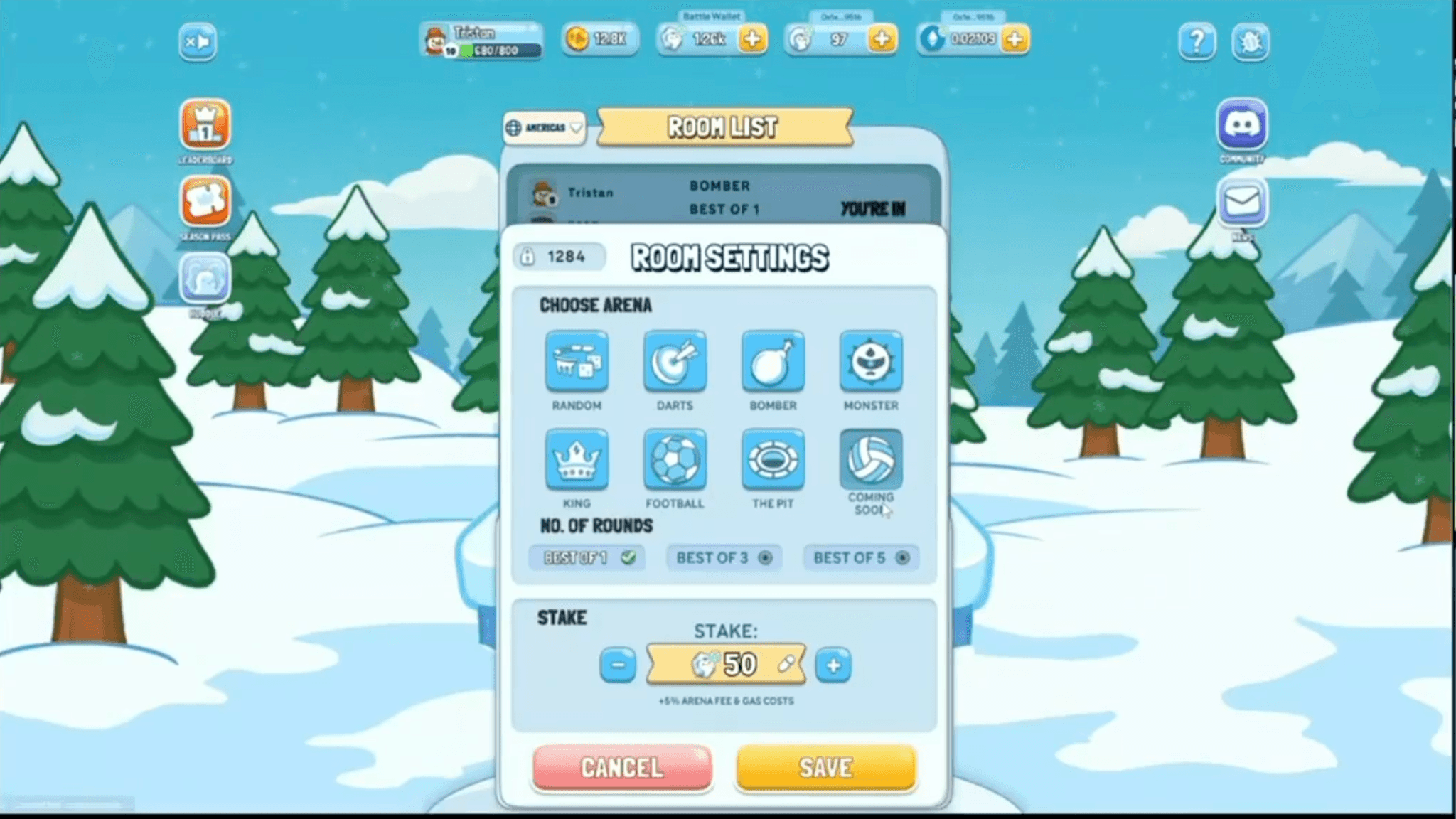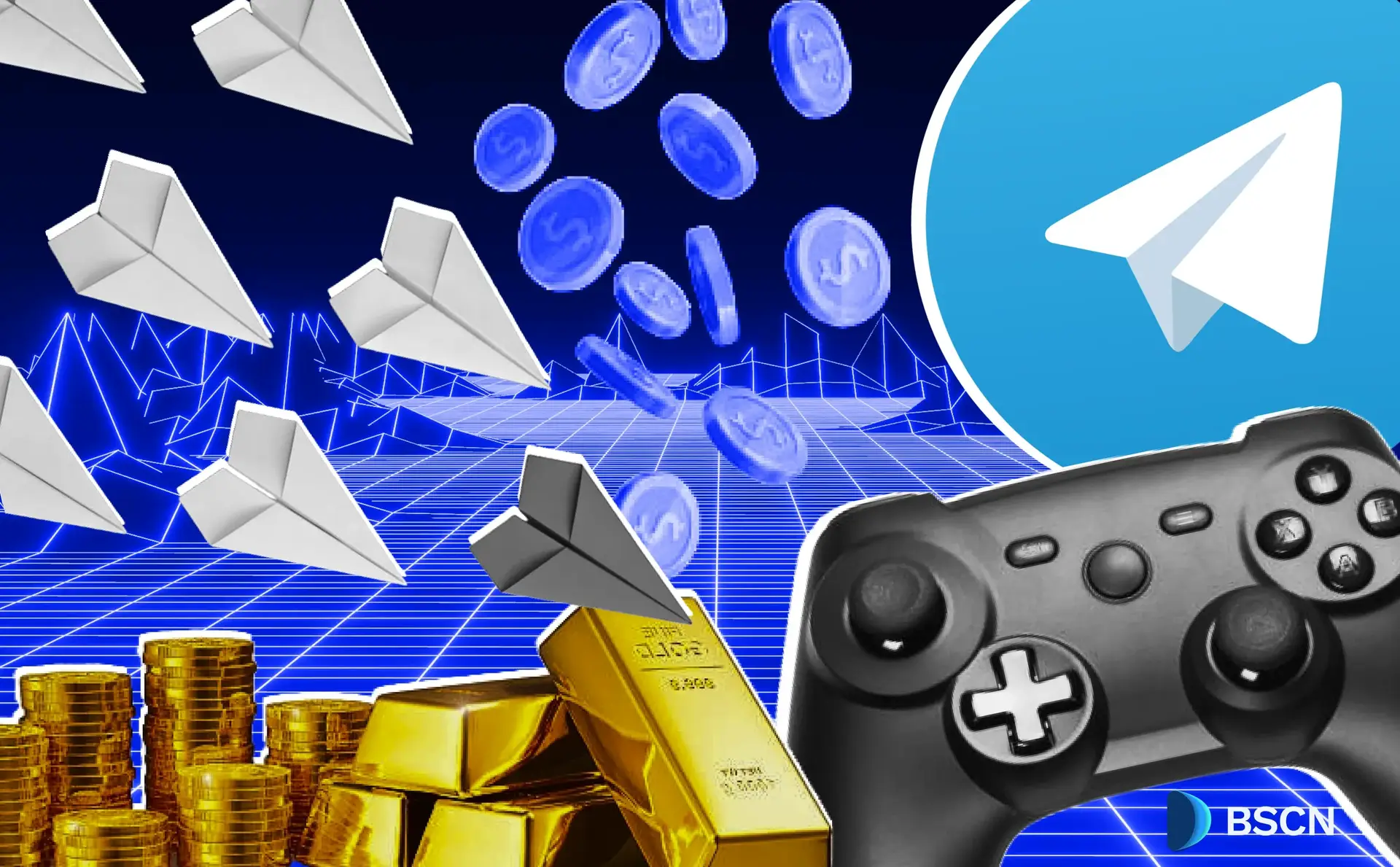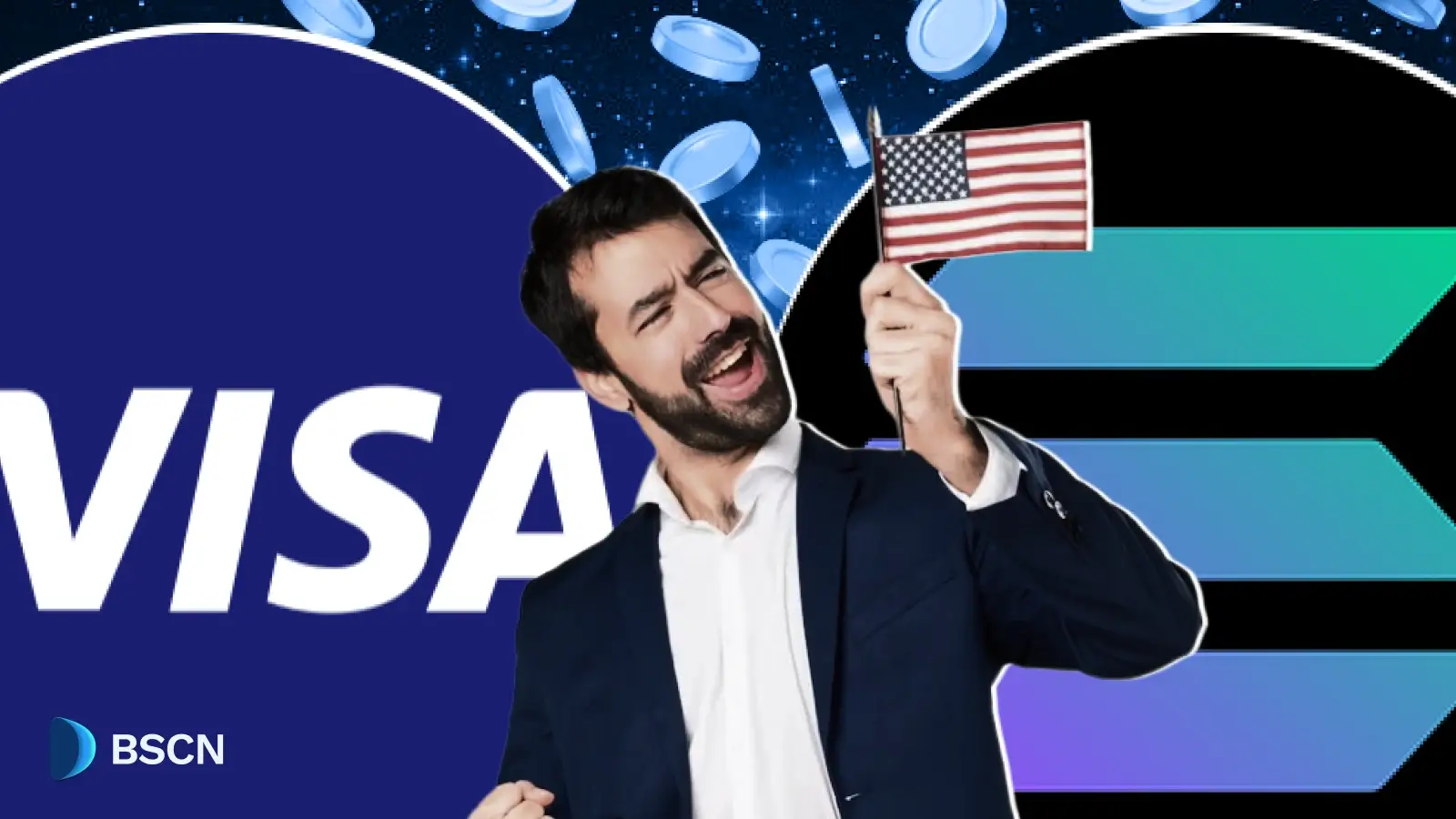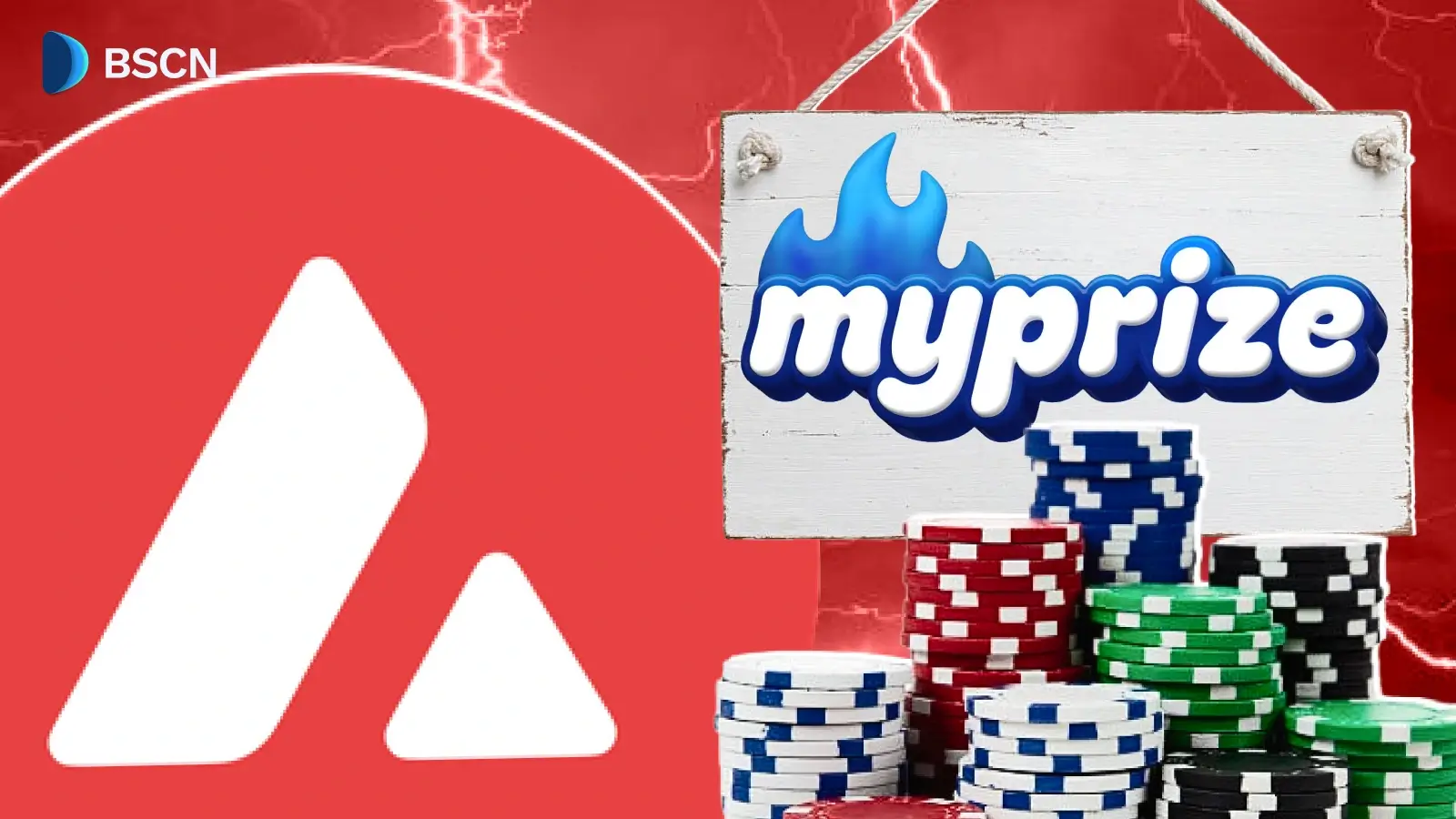Deepdive
(Advertisement)
Pengu Clash DeepDive: Exploring the Multiplayer Gaming Platform Developed by Pudgy Penguins

Pengu Clash stands out for its quick learning curve, intuitibe flick-based controls and verifiable results backed by Elimpics.
UC Hope
November 27, 2025
(Advertisement)
Table of Contents
Gaming platforms on blockchain networks have gained traction for providing verifiable match outcomes and integrating token-based rewards, contributing to broader cryptocurrency adoption. In the third quarter of 2025, blockchain games recorded 4.66 million daily unique active wallets. This metric highlights the role of gaming in attracting users through fair play mechanics and cross-network compatibility, distinct from traditional models reliant on centralized servers.
Pengu Clash sits within this growing category. Developed by the Pudgy Penguins team, the game blends physics-driven 1v1 strategy with cross-chain support on TON and AbstractChain. After testing multiple matches across several arena modes, the platform stands out for its quick learning curve, intuitive flick-based controls, and verifiable results backed by Elympics servers.
This deep dive examines how the system works, where it succeeds, and what players should consider before engaging with staked matches.
What is Pengu Clash?
Pengu Clash emerged from the Pudgy Penguins NFT project, which began as a collection on Ethereum before expanding into merchandise, animations, and a Solana-based memecoin called $PENGU. The game entered early access in mid-May 2025 as a Telegram mini-app on the TON blockchain, attracting a waitlist of over 1.1 million users by the time of its full release.
The technical backbone comes from Elympics, which uses real-time authoritative servers to validate every action server-side rather than client-side. This is important in mini-app environments because it reduces risks such as lag manipulation, client desync exploits, or unauthorized physics tampering, issues that have historically affected lightweight PvP games.
Initially, Pengu Clash was exclusive to Telegram's user base and was explicitly built for the TON Blockchain, but it added support for AbstractChain in late 2025. This dual-chain model allows seamless play across networks, with TON handling fast Telegram sessions and AbstractChain enabling soulbound tokens (SBTs).
How Does Pengu Clash Work?
Core Gameplay Mechanics
Matches in Pengu Clash typically last between one and three minutes, structured as 1v1 player-versus-player encounters. The central control scheme uses a flick-to-move system, where players drag and release on touchscreens or with mouse inputs to propel their Pengu character across icy arenas. The duration and force of the drag determine the strength of the movement, simulating real-world physics for momentum buildup, recoil upon collision, and curved trajectories influenced by arena surfaces.
Simulation Details:
- Momentum carries the Pengu forward after a flick, decaying gradually unless boosted by walls or items.
- Recoil occurs on impacts with opponents or edges, reversing direction based on relative speeds.
- Trajectory prediction requires accounting for ice friction and gravity-like pulls in certain modes, making precise aiming essential.
Positioning forms the foundation of success, as players must read opponent flicks, block paths, and chain movements to outmaneuver rivals. Anticipating enemy trajectories while conserving momentum prevents overshooting edges or missing scoring opportunities.
Arena Modes and Objectives
Arenas cycle through various modes, each presenting unique objectives that test different aspects of flick precision and strategy. Modes can appear in quick play, staked matches, or seasonal rotations, with options for best-of-three (Bo3) series where the same arena persists across games in random selections.

Pit, Curling, and Hockey Variants:
- Objective: Knock the opponent off the central platform into the surrounding pit first.
- Requires chaining boosts off walls for speed, timing collisions mid-slide, and using recoil to reposition. King Mode variant protects a "King" Pengu against walls to complicate knockouts.
Darts:
- Objective: Throw the Pengu at a target board to achieve the highest score by landing in high-value zones, such as the bullseye.
- Emphasizes arc control and power modulation, as over-flicks miss the board entirely.
Football (Soccer):
- Objective: Flick a puck or ball past the opponent's defensive positioning into the goal.
- Despite the 1v1 setup, simulates team play through strategic blocking and rebound setups, rewarding patience in setups.
Volleyball:
- Objective: Bump or spike a ball over the net into the opponent's side without letting it touch your floor.
- Critical elements include timing flicks for optimal arcs and rapid recovery positioning after returns.
Additional Modes:
- Bomber: Introduces explosive hazards that detonate on impact, adding risk to aggressive plays and requiring safer trajectories.
- Monster: Features dynamic environmental obstacles, like pursuing entities, which players must evade while pursuing objectives.
Random Arena mode selects one arena per match (or series), preventing mode-specific practice advantages.
Matchmaking, Progression, and Rewards
Elo-based matchmaking groups players by skill rating, ensuring balanced encounters that adjust dynamically after each game. Progression appears on global and seasonal leaderboards, tracking wins, win rates, and total points to rank climbers.
Standard wins earn ICE, the in-game currency used for purchasing cosmetics, minor utility boosts like SWAG multipliers (which increase ICE and XP yields), and inventory expansions. Staked matches enable peer-to-peer wagering with $PENGU, the Pudgy Penguins memecoin. Players deposit via Battle Wallet and set stakes of at least 50 $PENGU per game. The winner claims the full pot plus ICE, while outcomes are recorded on-chain via Elympics servers for tamper-proof verification of results and performance history.
What are its Key Features?
Pengu Clash incorporates several features that support player progression, personalization, and engagement without introducing pay-to-win dynamics. These elements tie into the Pudgy Penguins ecosystem, blending NFT assets with in-game earnings, while maintaining skill as the primary determinant of success.
Customization and Traits
Customization in Pengu Clash centers on equippable traits and skins derived from Pudgy Penguins NFTs and items earned through gameplay. These modifications apply to the player's Pengu character, offering visual changes and limited utility effects that do not impact core match balance, such as movement physics or win conditions.
Trait Types and Effects:
- Traits include headgear, face accessories, feather patterns, and full item sets, functioning as tradeable NFTs on TON.
- Examples encompass attack boosts (minor damage multipliers in collision-based modes), new animations (custom victory poses or slides), and cosmetics like the Snow White set or cyberpunk gear.
- Equipped traits display on avatars in leaderboards and matches, with ranks visible for top players.
Acquisition Methods:
- Earned via gameplay rewards, seasonal drops, airdrops to active players, or scanning QR codes on physical Pudgy Penguins toys for exclusive unlocks.
- Purchased or featured in the in-game shop using ICE, with daily rotating stock.
- Championship prizes include full custom sets for first place and rares for top five.
Fashion Week and SWAG System:
- Fashion Week rotates cosmetic items that influence SWAG multipliers, which increase ICE and XP yields but do not affect competitive balance.
- SWAG acts as a multiplier: Items marked with the SWAG icon provide 2x yields on ICE and XP earnings from matches and quests, refreshing weekly to encourage rotation.
- Enhances visual presentation in profiles and emotes without granting a competitive edge in arenas.
Daily Quests and Rewards
Daily quests provide consistent incentives for regular participation, rewarding completion with ICE and randomized chests. These tasks reset each day, promoting short sessions amid the 1-3 minute match structure.
Quest Types:
- Basic actions like daily logins, achieving a set number of wins, or completing matches in specific arenas (e.g., Pit or Volleyball).
- Seasonal variants tie into themes, such as Harvest Season's field-based challenges.
Rewards Structure:
- Primary payout: ICE currency for shop purchases and upgrades.
- Chests contain rare traits, cosmetics, or legendary items; higher completion streaks increase rarity odds.
- Huddle invites (friend referrals) grant bonus ICE from referred players' quests.
Quests integrate with leaderboards, where ICE points from performance contribute to rankings, with bonuses for staked wins or upsets against higher-rated opponents.
Player Profiles
Activated on November 13, 2025, player profiles serve as a centralized hub for tracking personal performance and history.
Profile Contents:
- Comprehensive stats: Total wins/losses, win rate percentage, average match duration, and mode-specific records (e.g., Darts bullseye accuracy).
- Match history: Recent games with outcomes, opponents' ranks, arenas played, and replay snippets where available.
- Progression journey: Seasonal Wrapped summaries, leaderboard peaks, and equipped traits/SWAG totals.
Social and Utility Functions:
- Shareable links for flexing achievements on X or Discord.
- Integration with Elo ratings and all-time leaderboards for top 100 persistence.
Profiles encourage review and strategy refinement, displaying "your journey, your stats, your story."
In-Game Economy
The economy divides into free progression via ICE and optional $PENGU staking for higher-risk rewards, ensuring accessibility while supporting competitive wagering.
ICE Currency:
- Earned from wins, quests, and SWAG multipliers; spent on cosmetics, inventory slots, and non-competitive boosts.
- No grinding required for viability, free play yields sufficient for full customization over time.
$PENGU Staking:
- Peer-to-peer in private rooms or quick matchmaking: Set stake (minimum 50 $PENGU), winner takes full pot plus ICE.
- Battle Wallet manages deposits/withdrawals, bridging TON and AbstractChain for seamless transfers.
- Verified on-chain via Elympics; higher stakes yield more ICE points for leaderboards.
Traits offer only cosmetic or yield-enhancing utility (e.g., SWAG), preserving skill-based outcomes with no direct power advantages.
Accessibility and Social Features
Pengu Clash prioritizes low barriers to entry, enabling instant play across platforms.
Entry Requirements:
- Quick play needs no wallet: Guest mode via the website or Telegram bot.
- Full features (staking, profiles) require TON or Abstract Global Wallet (AGW) connection.
Social Interactions:
- Post-victory emotes like "Too Easy!" taunt opponents and activate automatically after wins.
- Discord for tournaments, friend huddles, and strategy sharing.
These features create a flexible environment for both casual and competitive players, though their usefulness varies depending on how invested a player is in progression, cosmetics, or staking.
Seasons and Competitive Events
Pengu Clash structures competition around weekly seasons, each resetting leaderboards and introducing themed quests, cosmetics, and arenas. Season 15, themed Movember for men's health awareness, concluded on November 24, 2025. Season 16, Thanksgiving, is the next one following the recent announcement.
💙 SEASON 15 WRAPPED Up! 🤝
— Pengu Clash (@PenguClash) November 24, 2025
Big cheers to every Clasher who kept the arena buzzing and climbed the board 🏆
Next up: Thanksgiving Season 🦃
Warm vibes, reflection, gratitude, and community ✨
👉 https://t.co/6pr4TuwnmC pic.twitter.com/XtKcQPFUMx
Earlier seasons included Volleyball (Season 11), the introduction of Pit mode (Season 9), Harvest (Season 13), and Halloween (Season 12). Top performers receive $PENGU splits, such as 25,000 $PENGU for the top 10 in some cycles, plus legendary items and shop discounts.
Weekend Championships occur on Saturdays, featuring prize pools of 7,850 $PENGU, custom item sets for first place, and rares for the top five. Registration requires a Google Form and Discord membership, with first-come, first-served entry.
How to Play Pengu Clash?
Below is a short summary of how to start playing the Pengu Clash game:
Open Pengu Clash via the website or Telegram mini-app.
Choose your mode: Guest mode for learning; wallet-connected mode for full features.
Play a few Quick Play matches to understand momentum, recoil, and trajectory control.
Equip basic traits once unlocked; these are cosmetic and do not affect fairness.
Complete daily quests to earn ICE for cosmetics and inventory slots.
Only enter staked matches after practicing, since $PENGU wagers introduce real financial risk.
Join Discord for tournament access, rule updates, and arena strategy discussions.
Risks & Considerations
While Pengu Clash emphasizes skill-based gameplay, several considerations matter for new and returning players:
- Token Volatility: Staked matches use $PENGU, whose value can fluctuate. Players should budget stakes with typical crypto-market variance in mind.
- Competitive Skill Gap: Elo-based matchmaking is generally balanced, but high-skill players dominate staked rooms during peak hours.
- Learning Curve: Flick mechanics reward precision; early losses are common until players adjust to momentum and surface physics.
- Wallet Safety: Connecting a TON or AGW wallet is required to access all features. Players should follow standard security practices when interacting with Telegram mini-apps and browser wallets.
- Time-Limited Rewards: Seasonal items and SBT windows require consistent participation. This may not align with casual play styles.
Is Pengu Clash Right for You?
Pengu Clash is best suited for players who enjoy short, physics-driven matches and are comfortable with optional Web3 components. Players seeking purely cosmetic progression will find plenty to unlock, while competitive users may appreciate the on-chain verification and structured staking formats. Those unfamiliar with wallet management or uninterested in token-based rewards may prefer to remain in free-play modes.
Conclusion
Pengu Clash offers a well-executed blend of physics-based PvP, verifiable on-chain outcomes, and accessible onboarding through Telegram and web clients. Its appeal lies in short, skill-driven matches supported by Elympics’ server architecture and optional staking for advanced players. While its economy and season structure reward consistency, players should consider token volatility and the learning curve before engaging in staked play. For those seeking competitive, physics-focused gameplay with transparent match validation, Pengu Clash presents a solid and evolving option within the Web3 gaming landscape.
Sources:
- Website: Pengu Clash Official Website
- X: Pengu Clash Latest Updates
- DappRadar: The state of gaming in Q3 2025
- Blockworks: Pengu Clash Launch
Read Next...
Frequently Asked Questions
What is Pengu Clash?
Pengu Clash is a physics-based 1v1 multiplayer game developed by the Pudgy Penguins team. It is available through a Telegram mini-app and web client and supports cross-chain functionality on TON and AbstractChain. Players flick their Pengu characters across various arenas to complete objectives or outmaneuver opponents.
Is Pengu Clash free to play?
Yes. All core gameplay modes, arenas, and match types are available for free. In-game earnings (ICE) can be obtained through standard matches and quests without any payment or staking requirements.
How does matchmaking work?
The game uses an Elo-based system that pairs players with similar skill levels. Ratings adjust after each match, contributing to seasonal and all-time leaderboards.
Disclaimer
Disclaimer: The views expressed in this article do not necessarily represent the views of BSCN. The information provided in this article is for educational and entertainment purposes only and should not be construed as investment advice, or advice of any kind. BSCN assumes no responsibility for any investment decisions made based on the information provided in this article. If you believe that the article should be amended, please reach out to the BSCN team by emailing [email protected].
Author
 UC Hope
UC HopeUC holds a bachelor’s degree in Physics and has been a crypto researcher since 2020. UC was a professional writer before entering the cryptocurrency industry, but was drawn to blockchain technology by its high potential. UC has written for the likes of Cryptopolitan, as well as BSCN. He has a wide area of expertise, covering centralized and decentralized finance, as well as altcoins.
(Advertisement)
Latest News
(Advertisement)
Crypto Project & Token Reviews
Project & Token Reviews
Comprehensive reviews of crypto's most interesting projects and assets
Learn about the hottest projects & tokens
Latest Crypto News
Get up to date with the latest crypto news stories and events

















